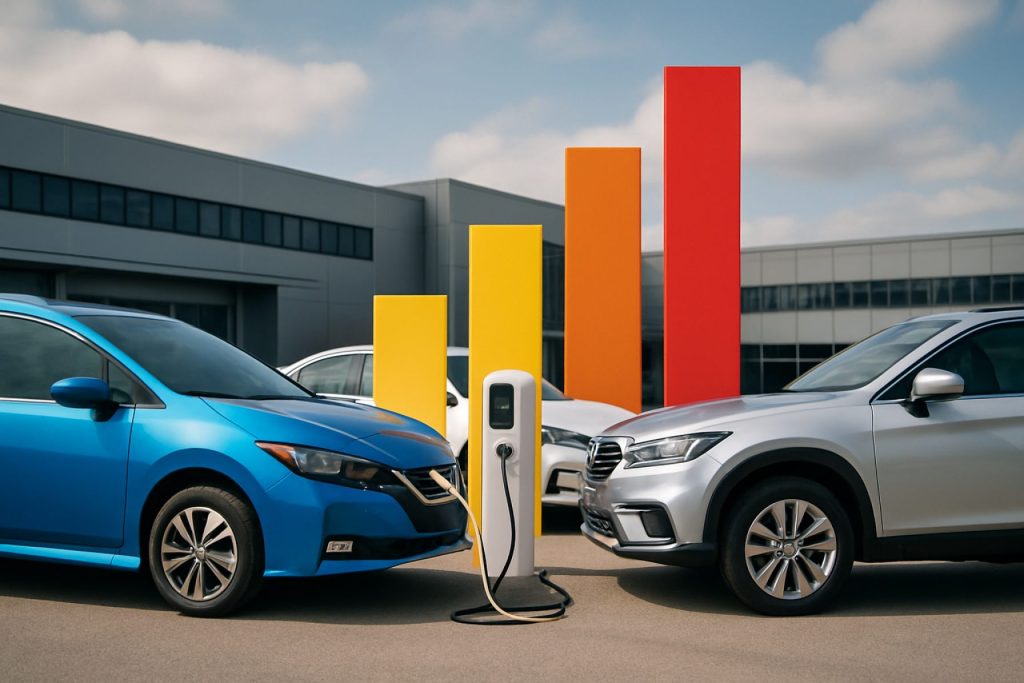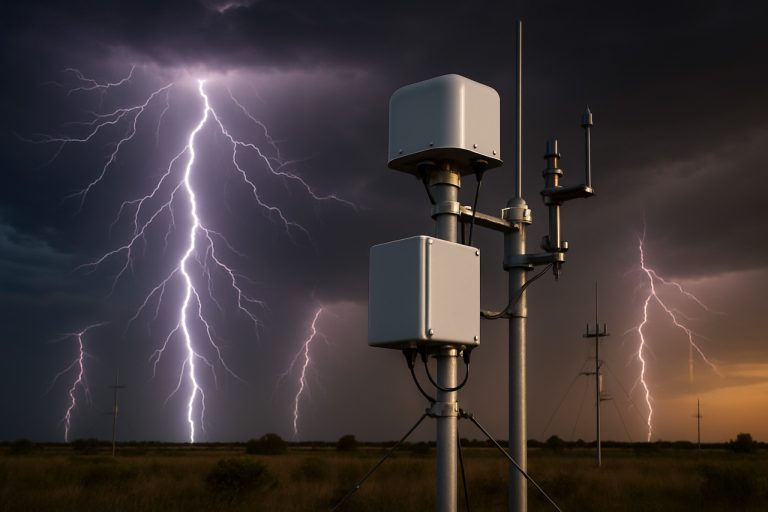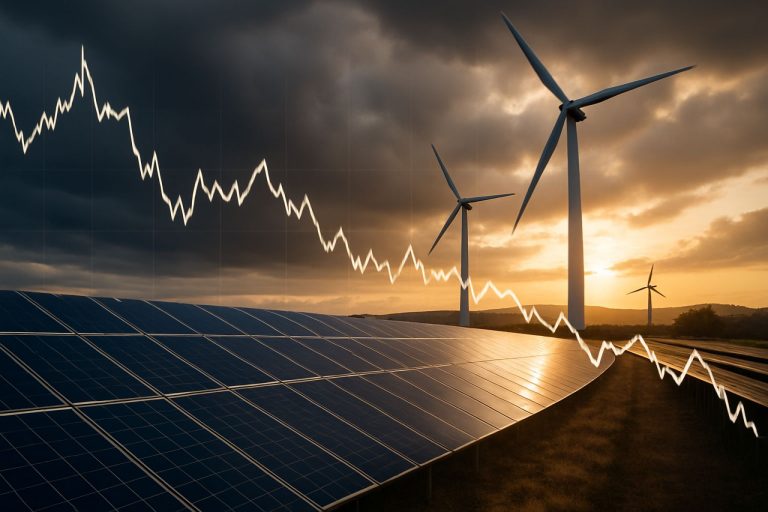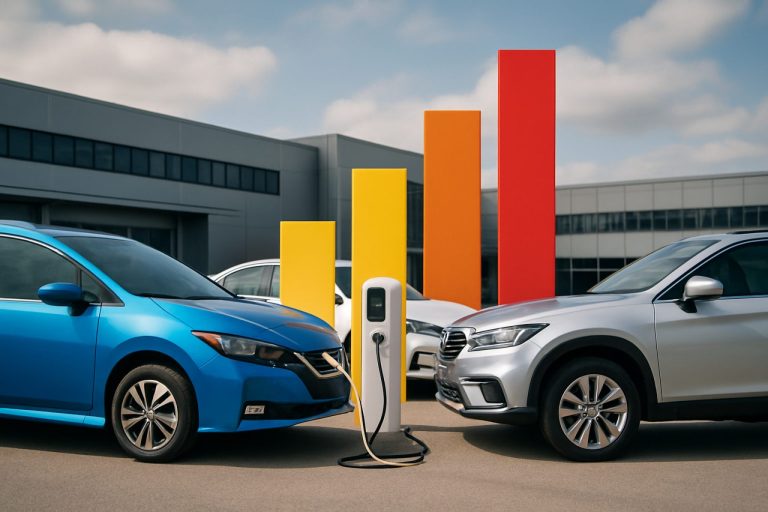
EV and Hybrid Market Positioning in 2025: Unveiling the Strategies, Technologies, and Growth Trajectories Shaping the Next Automotive Revolution. Discover How Industry Leaders Are Securing Their Place in a Rapidly Evolving Landscape.
- Executive Summary: Key Findings and Market Outlook
- Global Market Size and 2025–2030 Growth Forecasts
- Competitive Positioning: Leading OEMs and New Entrants
- Technology Innovations: Batteries, Powertrains, and Charging Infrastructure
- Regulatory Drivers and Policy Impacts (2025–2030)
- Consumer Trends and Shifting Demand Patterns
- Supply Chain Dynamics and Critical Material Sourcing
- Regional Analysis: North America, Europe, Asia-Pacific, and Emerging Markets
- Strategic Partnerships, M&A, and Investment Trends
- Future Outlook: Disruptive Forces and Scenario Planning
- Sources & References
Executive Summary: Key Findings and Market Outlook
The global electric vehicle (EV) and hybrid market is entering a pivotal phase in 2025, marked by intensifying competition, evolving consumer preferences, and significant investments from established automakers and new entrants. The sector’s positioning is increasingly defined by rapid technological advancements, expanding model portfolios, and strategic partnerships aimed at securing supply chains and scaling production.
Leading automakers such as Toyota Motor Corporation, Volkswagen AG, and Ford Motor Company are accelerating their electrification strategies. Toyota Motor Corporation continues to leverage its hybrid leadership, expanding its plug-in hybrid and battery electric offerings, while Volkswagen AG is scaling its ID. series and investing in dedicated EV platforms. Ford Motor Company is ramping up production of its Mustang Mach-E and F-150 Lightning, targeting both mass-market and commercial segments.
Pure-play EV manufacturers such as Tesla, Inc. maintain a strong market position through vertical integration, proprietary battery technology, and a robust charging network. Tesla, Inc.’s continued expansion in North America, Europe, and Asia, alongside the introduction of new models, is expected to sustain its leadership in the near term. Meanwhile, Chinese companies like BYD Company Limited and Geely Automobile Holdings Limited are rapidly increasing their global footprint, leveraging cost advantages and government support to penetrate new markets.
The competitive landscape is further shaped by joint ventures and alliances. For example, Honda Motor Co., Ltd. and General Motors Company are collaborating on next-generation battery technologies and co-developed EV platforms, aiming to accelerate time-to-market and reduce costs. Battery suppliers such as Contemporary Amperex Technology Co., Limited (CATL) and LG Corporation are also critical players, investing in new gigafactories and advanced chemistries to meet surging demand.
Looking ahead, the market outlook for 2025 and the following years is characterized by continued growth, albeit with regional variations. Regulatory support, such as stricter emissions targets in the European Union and incentives in the United States and China, will remain key drivers. However, challenges persist, including supply chain constraints, raw material price volatility, and the need for expanded charging infrastructure. Automakers’ ability to differentiate through technology, brand, and ecosystem integration will be central to their market positioning as the transition to electrified mobility accelerates.
Global Market Size and 2025–2030 Growth Forecasts
The global electric vehicle (EV) and hybrid market is positioned for robust expansion through 2025 and into the latter part of the decade, driven by regulatory mandates, technological advancements, and shifting consumer preferences. As of 2025, the worldwide EV market—including battery electric vehicles (BEVs), plug-in hybrid electric vehicles (PHEVs), and hybrid electric vehicles (HEVs)—is expected to surpass 17 million units in annual sales, representing a significant increase from approximately 14 million units in 2023. This growth is underpinned by aggressive electrification strategies from leading automakers and reinforced by government policies targeting emissions reduction and internal combustion engine (ICE) phase-outs.
Major automotive manufacturers are intensifying their EV and hybrid portfolios to secure competitive positioning. Toyota Motor Corporation, a pioneer in hybrid technology, continues to dominate the global hybrid segment, leveraging its extensive HEV lineup and expanding PHEV and BEV offerings. Volkswagen AG is executing its “Accelerate” strategy, aiming for over 70% of its European sales to be fully electric by 2030, and is rapidly scaling its modular electric drive matrix (MEB) platform. Tesla, Inc. remains the global leader in BEV sales, with a strong presence in North America, Europe, and China, and is expanding production capacity in key markets to maintain its market share.
In China, the world’s largest EV market, domestic manufacturers such as BYD Company Limited and Geely Automobile Holdings Limited are aggressively increasing output and introducing new models, contributing to China’s projected 40% share of global EV sales by 2025. The U.S. market is also accelerating, with Ford Motor Company and General Motors Company investing billions in electrification and targeting 40–50% of their U.S. sales to be electric by 2030.
Looking ahead to 2030, global EV and hybrid sales are forecast to reach between 35 and 40 million units annually, with BEVs expected to account for the majority of growth. The market’s trajectory is shaped by ongoing battery cost reductions, expansion of charging infrastructure, and stricter emissions regulations in major economies. Automakers are increasingly forming strategic alliances with battery suppliers and technology firms to secure supply chains and accelerate innovation, as seen in partnerships between Stellantis N.V. and battery manufacturers.
Overall, the EV and hybrid market’s positioning in 2025 reflects a transition from early adoption to mainstream acceptance, with leading automakers and new entrants vying for share in a rapidly evolving landscape. The next five years will be critical as the industry scales production, diversifies product offerings, and navigates regulatory and supply chain challenges to meet ambitious growth targets.
Competitive Positioning: Leading OEMs and New Entrants
The competitive landscape of the EV and hybrid market in 2025 is defined by a dynamic interplay between established automotive OEMs and agile new entrants, each leveraging distinct strategies to capture market share. Traditional automakers such as Toyota Motor Corporation, Volkswagen AG, Ford Motor Company, and Honda Motor Co., Ltd. are accelerating their electrification roadmaps, while pure-play EV manufacturers and technology-driven startups are intensifying competition with innovation and speed to market.
Toyota, long a leader in hybrid technology, continues to dominate the global hybrid segment with its extensive lineup, including the Prius and RAV4 Hybrid. In 2025, Toyota is expanding its battery electric vehicle (BEV) offerings, aiming for a balanced portfolio that addresses both hybrid and full-electric demand. The company’s strategy emphasizes reliability, affordability, and global scale, targeting mass-market adoption across regions (Toyota Motor Corporation).
Volkswagen, through its ID. family, is aggressively scaling its EV production, with a target to become the world’s largest EV manufacturer by the latter half of the decade. The group’s modular MEB platform underpins a range of models across its brands, including Audi and Škoda, enabling cost efficiencies and rapid model proliferation. Volkswagen’s investments in battery technology and European gigafactories further reinforce its competitive positioning (Volkswagen AG).
Ford is leveraging its iconic brands, such as Mustang and F-150, to drive EV adoption in North America. The Mustang Mach-E and F-150 Lightning have positioned Ford as a credible EV contender, with the company committing to significant electrification investments and partnerships for battery supply and charging infrastructure (Ford Motor Company).
Honda, while historically focused on hybrids, is accelerating its BEV strategy through alliances and new model launches. The company’s partnership with General Motors for Ultium battery technology exemplifies the collaborative approach among legacy OEMs to share costs and speed up development (Honda Motor Co., Ltd.).
Among new entrants, Tesla, Inc. remains the benchmark for EV innovation, scale, and brand cachet. Tesla’s vertically integrated approach, global Gigafactories, and software-driven features continue to set industry standards. Meanwhile, Chinese manufacturers such as BYD Company Ltd. and NIO Inc. are rapidly expanding internationally, leveraging cost-competitive manufacturing and advanced battery technologies to challenge incumbents.
Looking ahead, the market is expected to see intensified competition as both established OEMs and new entrants race to achieve scale, reduce costs, and differentiate through technology, sustainability, and customer experience. Strategic partnerships, vertical integration, and regional manufacturing footprints will be critical factors shaping competitive positioning in the EV and hybrid sectors through the remainder of the decade.
Technology Innovations: Batteries, Powertrains, and Charging Infrastructure
The global electric vehicle (EV) and hybrid market is undergoing rapid transformation in 2025, driven by technological innovation, regulatory momentum, and shifting consumer preferences. Market positioning among automakers is increasingly defined by advancements in battery technology, powertrain efficiency, and charging infrastructure, as well as strategic partnerships and regional expansion.
Leading manufacturers such as Tesla, Inc., Volkswagen AG, and Toyota Motor Corporation are leveraging their R&D capabilities to differentiate their EV and hybrid offerings. Tesla continues to set benchmarks in battery range and charging speed, with its proprietary battery technology and Supercharger network providing a competitive edge. Volkswagen, through its ID. series and the modular MEB platform, is scaling production and targeting mass-market adoption, while Toyota maintains a stronghold in the hybrid segment with its Hybrid Synergy Drive and is expanding its battery electric vehicle (BEV) lineup.
Battery innovation remains central to market positioning. Automakers are investing in next-generation chemistries, such as solid-state batteries, to improve energy density, safety, and cost. Nissan Motor Corporation has announced plans to introduce solid-state batteries by 2028, with pilot production beginning earlier, aiming to halve battery costs and significantly reduce charging times. BYD Company Limited is advancing its Blade Battery technology, emphasizing safety and longevity, and is rapidly expanding its global presence, particularly in Europe and Southeast Asia.
Powertrain efficiency is another key differentiator. Hyundai Motor Company and Kia Corporation are deploying 800V architectures in their E-GMP platform, enabling faster charging and improved performance. These technical advancements allow for broader model diversification, from affordable compacts to high-performance vehicles, catering to a wide spectrum of consumers.
Charging infrastructure is a critical battleground for market positioning. Ford Motor Company and General Motors Company have announced collaborations to expand access to fast-charging networks across North America, including adoption of the North American Charging Standard (NACS) to ensure interoperability. Mercedes-Benz Group AG is investing in its own branded charging hubs, aiming to enhance the premium ownership experience.
Looking ahead, the competitive landscape will be shaped by the ability to deliver cost-effective, high-performance EVs and hybrids, supported by robust charging ecosystems. Automakers that can scale battery innovation, optimize powertrains, and secure charging partnerships are poised to strengthen their market positions as global EV adoption accelerates through 2025 and beyond.
Regulatory Drivers and Policy Impacts (2025–2030)
The period from 2025 onward marks a pivotal phase for electric vehicle (EV) and hybrid market positioning, as regulatory drivers and policy impacts intensify across major automotive markets. Governments worldwide are leveraging a mix of emissions standards, incentives, and mandates to accelerate the transition from internal combustion engines (ICE) to electrified powertrains, directly shaping automaker strategies and competitive dynamics.
In the European Union, the “Fit for 55” package is set to enforce a 55% reduction in CO2 emissions from new cars by 2030 compared to 2021 levels, with an effective ban on new ICE vehicle sales by 2035. This regulatory trajectory compels automakers such as Volkswagen AG and Stellantis N.V. to accelerate their EV rollouts and invest heavily in battery and hybrid technologies. Both companies have announced multi-billion-euro electrification strategies, with Volkswagen targeting over 70% of its European sales to be all-electric by 2030, and Stellantis aiming for 100% of passenger car sales in Europe to be BEVs by 2030.
In the United States, the Environmental Protection Agency (EPA) has finalized new emissions standards for light-duty vehicles, effective from model year 2027, which are expected to push EVs and hybrids to comprise up to 67% of new vehicle sales by 2032. This regulatory push is reinforced by federal incentives under the Inflation Reduction Act, which provides tax credits for qualifying EVs and battery components manufactured in North America. Major U.S. automakers such as General Motors Company and Ford Motor Company have responded by scaling up domestic EV production and forming strategic battery supply partnerships.
China, the world’s largest EV market, continues to extend its New Energy Vehicle (NEV) mandate, requiring automakers to meet annual NEV credit targets. The government’s 2025 target is for NEVs—including BEVs, plug-in hybrids, and fuel cell vehicles—to account for 25% of new vehicle sales. Leading Chinese manufacturers such as BYD Company Limited and Zhejiang Geely Holding Group are leveraging strong policy support and domestic supply chains to expand both domestically and internationally, with BYD surpassing 3 million annual NEV sales in 2023 and targeting further growth.
Globally, these regulatory frameworks are not only accelerating the shift toward electrification but also intensifying competition among automakers to secure market share in the EV and hybrid segments. The next few years will see increased investment in battery technology, localized manufacturing, and the development of affordable models, as companies position themselves to comply with evolving policies and capture emerging demand.
Consumer Trends and Shifting Demand Patterns
The electric vehicle (EV) and hybrid market in 2025 is characterized by rapidly evolving consumer preferences, driven by a combination of regulatory pressures, technological advancements, and shifting societal attitudes toward sustainability. Major automakers are recalibrating their market positioning to capture emerging demand segments, with a particular focus on affordability, range, and charging convenience.
In North America and Europe, consumer demand for EVs and hybrids continues to grow, supported by government incentives and increasingly stringent emissions regulations. For example, Ford Motor Company has expanded its EV lineup, including the Mustang Mach-E and F-150 Lightning, targeting both mainstream and performance-oriented consumers. Similarly, Volkswagen AG is aggressively positioning its ID. series to appeal to a broad demographic, aiming for mass-market adoption by offering competitive pricing and improved battery technology.
Asian manufacturers are also intensifying their efforts. Toyota Motor Corporation, a pioneer in hybrid technology, is leveraging its established reputation to maintain leadership in the hybrid segment while accelerating its battery electric vehicle (BEV) rollout. Hyundai Motor Company and Kia Corporation are expanding their EV portfolios, emphasizing long-range capabilities and advanced connectivity features to attract tech-savvy consumers.
A notable trend in 2025 is the increasing segmentation of the EV/hybrid market. Premium brands such as Tesla, Inc. and Mercedes-Benz Group AG are reinforcing their positions with high-performance models and luxury features, while also introducing more accessible variants to broaden their customer base. Meanwhile, new entrants from China, including BYD Company Limited and Geely Holding Group, are leveraging cost advantages and domestic market scale to expand internationally, often targeting value-conscious buyers.
Consumer expectations are also shifting toward holistic ownership experiences. Automakers are investing in digital platforms, over-the-air software updates, and integrated charging solutions. For instance, General Motors Company is developing its Ultium platform to underpin a wide range of models, promising flexibility and scalability. Additionally, partnerships with charging infrastructure providers are becoming a key differentiator, as seen in collaborations between automakers and charging networks to address range anxiety and enhance convenience.
Looking ahead, the EV/hybrid market is expected to become even more competitive, with differentiation increasingly based on user experience, total cost of ownership, and brand trust. As battery costs decline and charging networks expand, mainstream adoption is likely to accelerate, reshaping the automotive landscape through 2025 and beyond.
Supply Chain Dynamics and Critical Material Sourcing
The positioning of electric vehicle (EV) and hybrid manufacturers in the global market through 2025 is increasingly defined by their ability to secure and manage critical materials within their supply chains. As demand for EVs and hybrids accelerates, driven by tightening emissions regulations and consumer adoption, automakers are facing heightened competition for essential inputs such as lithium, nickel, cobalt, and rare earth elements. These materials are vital for battery production and electric drivetrains, making their sourcing a strategic priority.
Major automakers are responding with direct investments and long-term agreements to stabilize supply and mitigate price volatility. Tesla, Inc. has continued to expand its upstream integration, securing lithium and nickel supply contracts with global mining firms and exploring in-house lithium refining. Similarly, Ford Motor Company and General Motors Company have announced multi-year partnerships with battery material suppliers and are investing in North American battery manufacturing to localize supply chains and reduce exposure to geopolitical risks.
Asian manufacturers, particularly Toyota Motor Corporation and Honda Motor Co., Ltd., are leveraging established supplier networks and joint ventures to secure rare earths and battery-grade materials. Toyota, for example, has focused on diversifying its battery chemistries to reduce reliance on scarce materials, while Honda is collaborating with battery producers to ensure stable procurement as it ramps up hybrid and EV production.
Battery manufacturers such as Contemporary Amperex Technology Co., Limited (CATL) and LG Energy Solution are also central to market positioning. Their ability to scale production and innovate with alternative chemistries (e.g., lithium iron phosphate, solid-state batteries) is influencing automaker strategies and timelines for new model launches. These suppliers are expanding global footprints, with new gigafactories in Europe and North America, to meet surging demand and comply with local content requirements.
Looking ahead, the outlook for 2025 and beyond suggests continued volatility in critical material markets, with supply chain resilience becoming a key differentiator. Automakers that can secure sustainable, traceable sources of battery materials—through direct sourcing, recycling initiatives, or technological innovation—will be better positioned to capture market share and meet regulatory targets. The emergence of new players in battery recycling and alternative material development is expected to further reshape the competitive landscape, as the industry seeks to balance growth with environmental and ethical considerations.
Regional Analysis: North America, Europe, Asia-Pacific, and Emerging Markets
The global electric vehicle (EV) and hybrid market is experiencing dynamic shifts in positioning across North America, Europe, Asia-Pacific, and emerging markets as of 2025. Each region demonstrates unique strategies, competitive landscapes, and growth trajectories, shaped by regulatory frameworks, consumer preferences, and local manufacturing capabilities.
North America continues to be a focal point for EV innovation and investment, led by Tesla, Inc., which maintains a dominant market share in both battery electric vehicles (BEVs) and plug-in hybrids. Traditional automakers such as General Motors Company and Ford Motor Company are accelerating their electrification roadmaps, with new models and expanded production capacity. The U.S. government’s Inflation Reduction Act is incentivizing domestic EV manufacturing and battery supply chains, further strengthening the region’s competitive positioning. Canada and Mexico are also ramping up EV assembly and component production, integrating North America as a cohesive supply hub.
Europe is characterized by aggressive regulatory targets and a rapidly expanding EV infrastructure. The European Union’s Fit for 55 package and impending internal combustion engine (ICE) phase-out deadlines are compelling automakers such as Volkswagen AG, Stellantis N.V., and Renault Group to prioritize electric and hybrid offerings. Volkswagen, in particular, is leveraging its modular electric drive matrix (MEB) platform to scale production across multiple brands. Premium manufacturers like Mercedes-Benz Group AG and BMW AG are also expanding their EV portfolios, targeting both mass-market and luxury segments. Europe’s robust charging network and consumer incentives are expected to sustain high adoption rates through the next several years.
Asia-Pacific is led by China, the world’s largest EV market, where companies such as BYD Company Limited and SAIC Motor Corporation Limited are rapidly scaling production and exports. Nissan Motor Co., Ltd. and Toyota Motor Corporation are reinforcing their hybrid and plug-in hybrid portfolios, particularly in Japan and Southeast Asia, where full BEV adoption is progressing more gradually. South Korea’s Hyundai Motor Company and Kia Corporation are expanding their global EV reach, leveraging advanced battery technologies and competitive pricing.
Emerging markets in Latin America, Africa, and parts of Southeast Asia are at earlier stages of EV and hybrid adoption. However, local initiatives and partnerships are beginning to take shape. For example, Tata Motors Limited is positioning itself as a leader in India’s nascent EV sector, while Chinese manufacturers are exploring joint ventures and exports to accelerate market entry in Africa and Latin America. Infrastructure development and affordability remain key challenges, but the outlook for gradual growth is positive as technology costs decline and supportive policies emerge.
Overall, the next few years will see intensified competition and strategic repositioning as automakers and suppliers adapt to regional market conditions, regulatory pressures, and evolving consumer expectations.
Strategic Partnerships, M&A, and Investment Trends
The electric vehicle (EV) and hybrid market in 2025 is characterized by a dynamic landscape of strategic partnerships, mergers and acquisitions (M&A), and targeted investments, as both established automakers and new entrants seek to strengthen their market positioning. The drive toward electrification has accelerated collaboration across the automotive value chain, with companies leveraging alliances to access advanced technologies, secure battery supply, and expand global reach.
One of the most significant trends is the formation of joint ventures between automakers and battery manufacturers. For example, Toyota Motor Corporation has deepened its partnership with Panasonic Holdings Corporation through their Prime Planet Energy & Solutions joint venture, focusing on next-generation lithium-ion batteries for both hybrid and full EVs. Similarly, Ford Motor Company has expanded its collaboration with LG Energy Solution and SK On to secure battery supply for its growing EV lineup, including the Mustang Mach-E and F-150 Lightning.
M&A activity remains robust as companies seek to acquire capabilities in software, autonomous driving, and electrification. Stellantis N.V. has made strategic investments in battery technology startups and digital mobility platforms, aiming to accelerate its transition to electric mobility. Meanwhile, Volkswagen AG continues to invest in its PowerCo battery subsidiary and has entered into partnerships with raw material suppliers to ensure long-term access to critical minerals.
Investment trends also highlight the growing importance of vertical integration. Tesla, Inc. has continued to invest heavily in its Gigafactories, focusing on in-house battery cell production and supply chain control. This approach is being mirrored by other automakers, such as Hyundai Motor Company, which has announced plans for dedicated EV production facilities and battery partnerships to support its IONIQ and Kia EV brands.
Looking ahead, the outlook for 2025 and beyond suggests that strategic partnerships and investments will remain central to market positioning. Automakers are expected to deepen collaborations with technology firms, battery suppliers, and charging infrastructure providers to address challenges related to range, cost, and consumer adoption. The competitive landscape will likely see further consolidation, as companies seek scale and technological leadership in an increasingly crowded market.
- Joint ventures between automakers and battery suppliers are critical for securing technology and supply.
- M&A activity is focused on acquiring software, battery, and autonomous driving capabilities.
- Vertical integration and investment in production capacity are key strategies for market leaders.
- Strategic alliances with technology and infrastructure partners are expected to intensify through 2025 and beyond.
Future Outlook: Disruptive Forces and Scenario Planning
The electric vehicle (EV) and hybrid market is entering a pivotal phase in 2025, shaped by disruptive forces such as evolving consumer preferences, regulatory shifts, and rapid technological advancements. Major automakers are recalibrating their market positioning strategies to address both the opportunities and challenges presented by this dynamic landscape.
A key driver is the intensification of emissions regulations across major markets. The European Union’s 2035 ban on new internal combustion engine (ICE) vehicles is accelerating the transition, prompting manufacturers like Volkswagen AG and Stellantis N.V. to expand their EV and hybrid portfolios. In the United States, the Environmental Protection Agency’s stricter emissions standards for 2027-2032 are pushing automakers to increase the share of zero-emission vehicles in their lineups. Ford Motor Company and General Motors have both announced plans to significantly ramp up EV production, with GM targeting an all-electric light-duty lineup by 2035.
Market positioning is also being shaped by the entry of new players and the global expansion of established EV specialists. Tesla, Inc. continues to lead in global EV sales, leveraging its brand strength and proprietary charging infrastructure. Meanwhile, Chinese manufacturers such as BYD Company Limited and Geely Holding Group are aggressively expanding into Europe and other regions, offering competitively priced models and challenging traditional automakers on both cost and technology.
Hybrid vehicles remain a strategic bridge in markets where full electrification faces infrastructure or affordability barriers. Toyota Motor Corporation, a pioneer in hybrid technology, is maintaining a dual-track approach, investing in both hybrid and battery electric vehicles to cater to diverse market needs. This strategy is echoed by Honda Motor Co., Ltd. and Hyundai Motor Company, who are positioning hybrids as a pragmatic solution for consumers not yet ready to transition to full EVs.
Looking ahead, the competitive landscape is expected to fragment further as software-defined vehicles, battery innovations, and new business models (such as vehicle-as-a-service) gain traction. Automakers are increasingly forming alliances with technology firms and battery suppliers to secure supply chains and accelerate innovation. The next few years will likely see a clearer stratification between premium, mass-market, and value-oriented EV/hybrid offerings, with market leaders distinguished by their ability to deliver compelling total cost of ownership, charging convenience, and digital experiences.
Sources & References
- Toyota Motor Corporation
- Volkswagen AG
- BYD Company Limited
- Geely Automobile Holdings Limited
- Contemporary Amperex Technology Co., Limited (CATL)
- LG Corporation
- General Motors Company
- Stellantis N.V.
- NIO Inc.
- Nissan Motor Corporation
- Hyundai Motor Company
- Kia Corporation
- General Motors Company
- Ford Motor Company
- Volkswagen AG
- Stellantis N.V.
- Renault Group
- BMW AG
- BYD Company Limited
- Nissan Motor Co., Ltd.
- Toyota Motor Corporation
- Hyundai Motor Company
- Tata Motors Limited
- SK On



